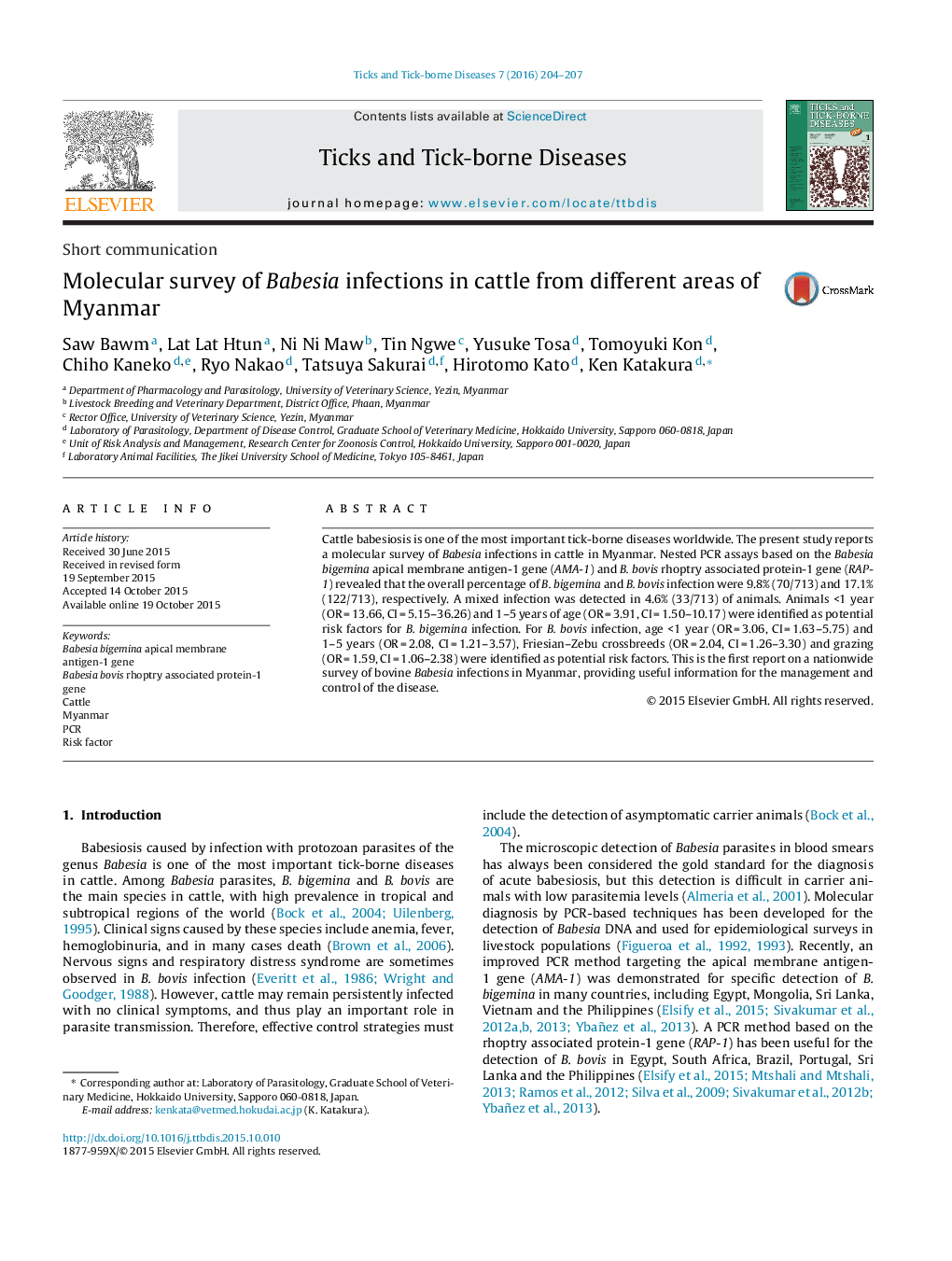| Article ID | Journal | Published Year | Pages | File Type |
|---|---|---|---|---|
| 5807056 | Ticks and Tick-borne Diseases | 2016 | 4 Pages |
Cattle babesiosis is one of the most important tick-borne diseases worldwide. The present study reports a molecular survey of Babesia infections in cattle in Myanmar. Nested PCR assays based on the Babesia bigemina apical membrane antigen-1 gene (AMA-1) and B. bovis rhoptry associated protein-1 gene (RAP-1) revealed that the overall percentage of B. bigemina and B. bovis infection were 9.8% (70/713) and 17.1% (122/713), respectively. A mixed infection was detected in 4.6% (33/713) of animals. Animals <1 year (ORÂ =Â 13.66, CIÂ =Â 5.15-36.26) and 1-5 years of age (ORÂ =Â 3.91, CIÂ =Â 1.50-10.17) were identified as potential risk factors for B. bigemina infection. For B. bovis infection, age <1 year (ORÂ =Â 3.06, CIÂ =Â 1.63-5.75) and 1-5 years (ORÂ =Â 2.08, CIÂ =Â 1.21-3.57), Friesian-Zebu crossbreeds (ORÂ =Â 2.04, CIÂ =Â 1.26-3.30) and grazing (ORÂ =Â 1.59, CIÂ =Â 1.06-2.38) were identified as potential risk factors. This is the first report on a nationwide survey of bovine Babesia infections in Myanmar, providing useful information for the management and control of the disease.
Graphical abstractDownload full-size image
